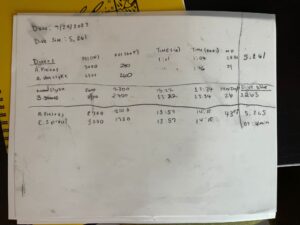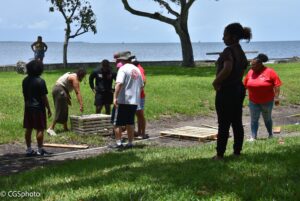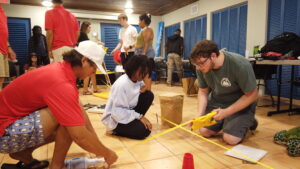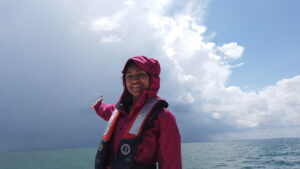Reflections on a Summer in Biscayne
By Analisa Freitas | November 28, 2023
I was in the depths of spring quarter when a WhatsApp message arrived on my phone. “Check your email!”, said Dr. Isabel. “You’ll want to see this.” It was an invitation to apply to a paid summer internship focused on maritime archaeology at Biscayne National Park with none other than Youth Diving With A Purpose and the Slave Wrecks Project. I dropped everything to apply, and was stunned to be chosen from a pool of more experienced international applicants hungry to be trained at the living classroom that is the nation’s largest marine park.
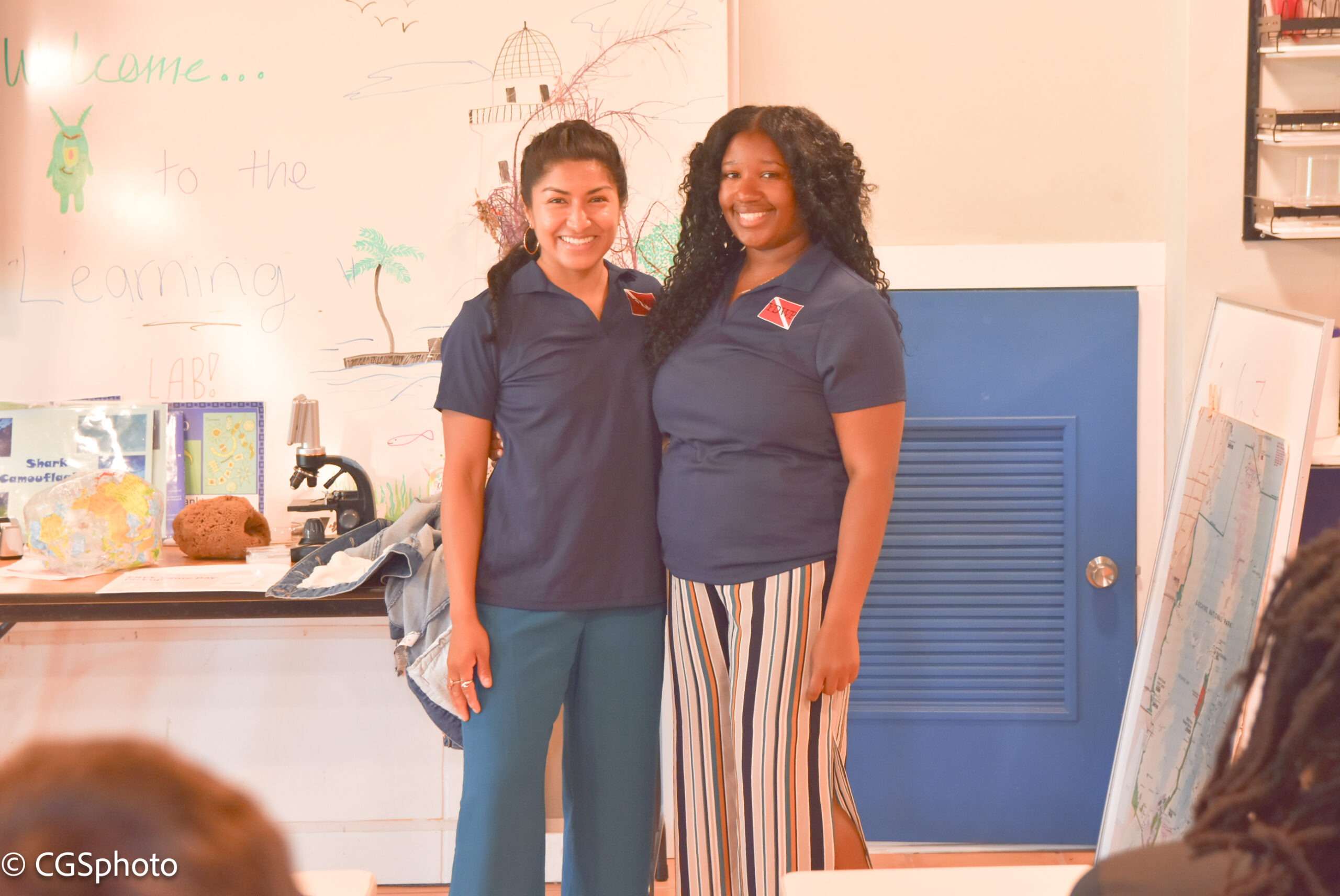
Bria Brooks and Analisa Freitas, Summer 2023 Interns
This internship, launched in 2020 by Biscayne National Park, Youth Diving With A Purpose, and the Slave Wrecks Project, had a goal to support minorities in the underwater archaeology field to gain experience from working professionals in the sector that they might otherwise not get due to the many financial and logistical barriers to getting on-the-ground opportunities. Students in the internship would get access to the living classroom of Biscayne where they could get well-versed in marine field operations both aquatic and terrestrial, improve scientific diving skills, and bring South Florida’s history alive. Given the lack of racial diversity in American archaeologists as well as SCUBA divers, the need for a stronger bridge that minority students scientists of color could use to enter the underwater archaeology field was paramount to fill a growing need for these professionals, particularly in cultural resource management.
I was housed within Everglades National Park with the other selected intern, Bria Brooks, a Masters student in Anthropology at the University of West Florida and Archaeology Assistant at the Florida Public Archaeology Network, and over the course of six weeks, quickly acclimated to the backcountry conditions of the region. Long lightning bolts and loud thunderstorms were a daily occurrence, which then broke into searing sunshine which demanded polarized sunglasses at all times, and included run-ins with various wildlife, most notably including being eaten alive by an aptly named bug called “no-see-ums”.
Almost every day we got alerts of heat advisories and record-high water temperatures, and most days, we still drove to the Biscayne offices to motor around the park – sometimes because that was the only place we could get semi-stable internet. I wrapped myself in UPF clothing, filled up my water backpack, packed extra bottles of electrolyte water, and sprayed myself with the strongest bug spray and sunscreen that I could handle.
Bria and I were kept very busy, being immersed in the world of working for the national government, understanding the ways community science and academic research projects could be integrated, and observing the ways that international professionals and resources add to the worldview of the work. Bria and I, supervised directly by Josh Marano, Maritime Archaeologist for the South Florida Parks, had a whirlwind of a summer.
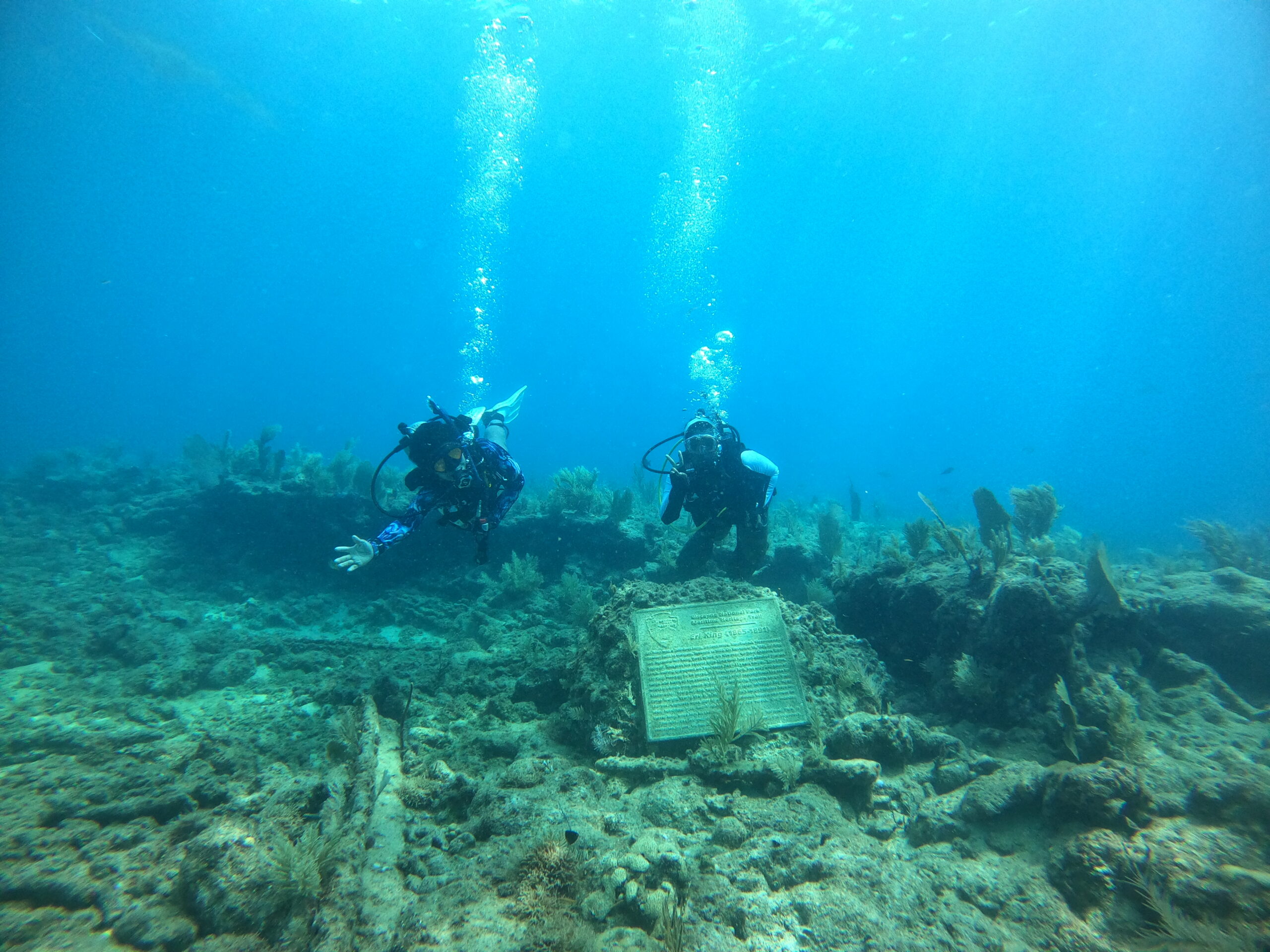
Summer 2023 Interns, diving in Biscayne National Park at archeological site, 2023. Photo by Gabrielle Miller.
We assessed a long list of underwater resources at the Park, including site on the Maritime Heritage Trail, checked for compliance issues related to the National Historic Preservation Act (Section 106), practiced boat safety and handling skills, searched for anomalies using free diving, surface snorkeling, and SCUBA, carried out magnetometer surveys to verify past data and gather new sets, and cataloged previously conserved artifacts, all while constantly updating our field notebooks and learning about required site visit documentation forms. We worked closely with archaeologists from the Submerged Resources Center and the Southeast Florida Archaeological Center, and trained the YDWP leaders and participants in baseline offset measurements.
It was a hugely unique opportunity to be surrounded by so many young people of color from all over the contiguous US, and even the Virgin Islands and Costa Rica, who were actually very seasoned divers despite their age. Many of them were returners to the YDWP program, and helped train those who were newer. One of the students this summer was actually doing her final open water dives to finish up and earn her open water certification. What a special community in which to do that! Another participant celebrated her birthday there. It was extremely impressive to hear their report backs about their efforts, and how seriously they took their search for evidence of the pirate slave ship Guerrero, a search that their sister program, Diving With A Purpose, had been collaborating on with Biscayne for over a decade. Earlier in the week, they had been discussing the history and purpose of Critical Race Theory, led by Jason Vasser-Elong, and were broadening their conversations to racial justice in all areas of their lives. They were encouraged to take on their role as primary narrators of history and document their experiences via creative writing exercises and blogs, posted to the Diving With A Purpose Facebook page.
Another highlight of the summer was making a discovery that allowed Bria and I to start our own research project. During our second day of site assessments, Josh had spotted a turtle swimming away from our boat, which was not that uncommon, but he had also seen a white patch of sand underneath said turtle. This was a sign that the turtle had been visiting that site often and had cleared out the seagrass, potentially to rub itself on something. Was it something man made? We turned the boat around to get a closer look, and suddenly a ship’s anchor came into sight. After consulting with Josh and doing further primary and secondary research, we confirmed that the artifact turned out to be a remnant from a steamer ship called the St. Lucie that had wrecked off of Elliot Key during a massive storm on October 18, 1906. It had resulted in the largest documented loss of life in the park, with many victims being buried in the Miami City Cemetery. It was both thrilling and chilling to dive down, fan the sand with our hands, and see where the chain led away from the anchor, and think of what the many passengers on the ship experienced while fighting for their lives. We were honored to be able to bring the stories of these people to light.

